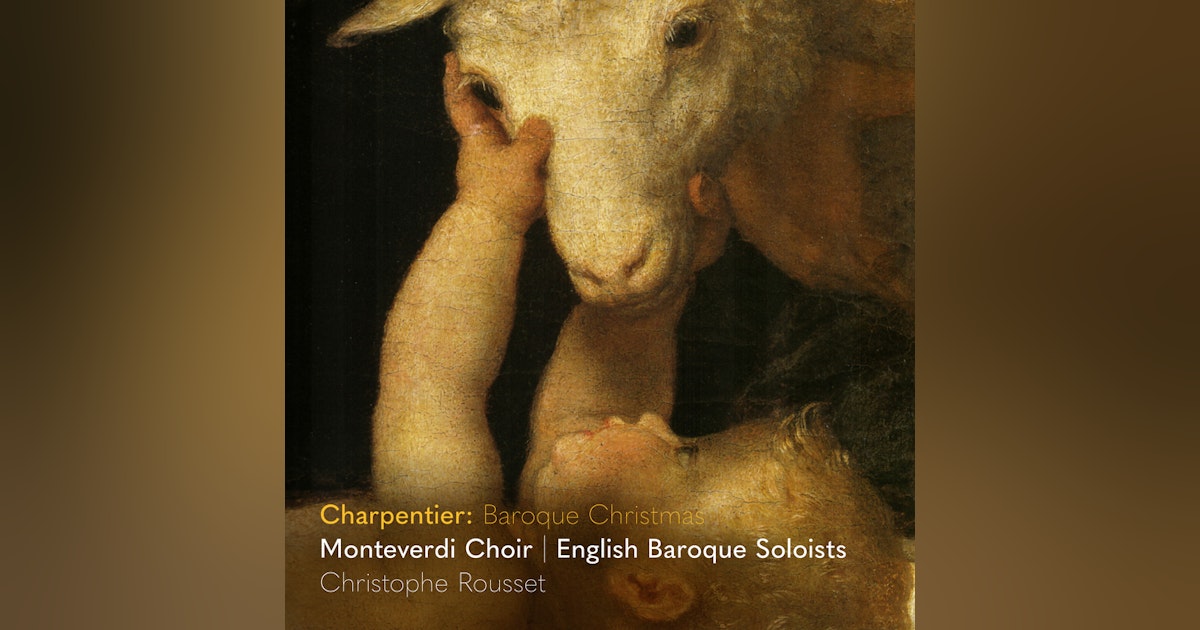
Recorded in the middle of a European tour of December 2024 at All Hallows Church, Gospel Oak, London, this recording makes the debut of the acclaimed Montevedi Choir and Christophe Rousset.
It is good to s more music by Marc-Antoine Charpentier (1634-1704). A pupil of Carissimi, he was well versed in the Italian style. We previously covered Chapentier’s Leçons de ténèbres at Wigmore Hall with William Christie, and the tremendous David et Jonathas and at Versailles. Not to mention the phenomenal Missa Assumpta Est on Versailles’ own record label.
Good, too, to see Rousset at he head of the Monteverdi Choir and English Baroque Soloists. The care he can he injects with Les Talens Lyriques in Lully and the like is everywhere apparent here.
The disc begins with In nativitatem Domini canticum, H 416. There are some astonishing chromatic descents in the instrumental Praeludium, setting the scene for “Usquequo avertis facem tuam” (from Psalm 12); we are in the Old Testament here, as the people plead to God to send a Saviour (this is the “Chrous of the Righteous,” “Momorare testament” (Be mindful of the covenant). Florian Störtz is a fine bass solos in “Colsolare filia Sion” (Be comforted, daughter of Zion); note how each strand of the intsrumental texture from the members of the English Baroque Soloists is so carefully phrased.
Here’s the “Praeludium”:
Those descents come back, just at the request for a”Redeemer” to come down from above. “The time is near” says the soloist, to skipping interjections from the players. Then …
Night falls, and how.
“Nuit” is a four minute-plus depiction of held-breath stillness. This is one of the earliest known usages of muted strings, incidentally.
The Angel is sung by haute-contre Sam Boden, superbly; and how the EBS pipes as he sings of shepherds and bringing them great joy. A bright chorus of Angels (“Gloria in altissimis Deo”; Glory to God in the highest) is balanced by a Chorus of Shepherds (which is itself prefaced by a bouncy “March of the Shepherds”!). How beautiful the chorus of Angels;; how jubilant the final chorus, “Exultemus, jubilees” (Let us rejoice and be glad). Here’s the Chorus of Angels (“Chorus Angelorum”):
It is all, of course, just so Christmassy. Quite right, then, to have the Messe de Minuit pour Noël, H 9. But first, interspersed Noëls sur les instuments, H. 531 and H 524, are performed with infinite grace by the members of the English Baroque Soloists. Scored for two recorders, strings and continuo, instrumental settings of course: : O Créateur, H 531/1, Les Bougeouis de Chastre, H 534/1; O nous dites Marie, H 534/4, and Une jeune pucelle, H 534/6. The transparency of these performances is perfect. The contrast between the sadness of O nous dites Marie and the jaunty Une jeune pucelle (loosely based on the older “Une jeune fillete”) is most effective:
The point here is that the Messe de Minuit pour Noël uses Noël melodies itself (neatly explained and listed in the booklet). It is also fascinating to hear how the Italian/French stylistic synthesis works, with Charpentier’s use of Italian counterpoint and concertante style.
Rarely has there been a jollier “Laudamus te”; or.more touching “Qui tollis” (part of “Domine Deus, Rex coelestis”) with its trio of solo male voices.
After the intoning of “Credo in unum Deo,” the movement actually seems to melt itself into existence; later, the choral contribution positively glows from inside:
The music of courtly dance informs “Deum de Deo” (God of God):
Hilary Cronin and Keri Fuge are the soprano (dessus) soloists in “Et in Spiritum Sanctum” their voices perfectly matched.
The individual movements are short, but the cumulative effect is huge, so that when we hear the “Benedictus,” with its intertwining solo lines, there is just a feeling of utter rightness:
A final sequence of instrumental Noëls closes the disc; Somehow, the second (Laissez paître von bêtes) sounds a bit like an English hornpipe to me!. Listen, too, to how the inner parts of the final cadence of that Noel illuminate the entire peformance:
Sublimely beautiful music in incomparable performances. The disc is available from Amazon here: iDagio below, Spotify here.







